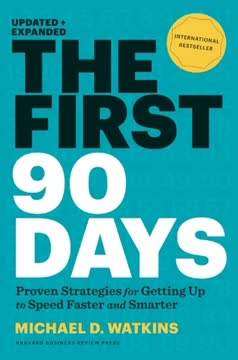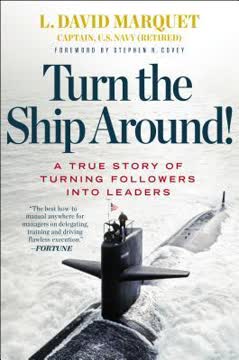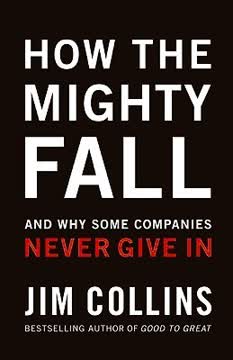نکات کلیدی
1. سلامت سازمانی بر همه چیز در کسبوکار برتری دارد
بزرگترین مزیت هر شرکتی، سلامت سازمانی است. با این حال، اکثر رهبران به آن توجه نمیکنند، در حالی که این موضوع ساده، رایگان و در دسترس هر کسی است که به آن نیاز دارد.
مزیت رقابتی. سلامت سازمانی زمینهساز استراتژی، مالی، بازاریابی، فناوری و هر چیز دیگری است که در یک شرکت اتفاق میافتد. این عامل، بزرگترین فاکتور تعیینکننده موفقیت یک سازمان است و از استعداد، دانش یا نوآوری مهمتر است. سازمانهای سالم از هوش و قابلیتهای بیشتری بهرهبرداری میکنند، در حالی که سازمانهای ناسالم منابع خود را از طریق سیاست، سردرگمی و بوروکراسی هدر میدهند.
غلبه بر تعصبات. رهبران معمولاً در پذیرش سلامت سازمانی با سه تعصب مواجه هستند:
- تعصب پیچیدگی: باور به اینکه سلامت خیلی ساده است تا مزیت واقعی ایجاد کند
- تعصب آدرنالین: ترجیح دادن راهحلهای سریع به راهحلهای کندتر و پایدارتر
- تعصب کمیسازی: دشواری در اندازهگیری تأثیر سلامت بهطور دقیق
برای سالم شدن، سازمانها باید بر این تعصبات غلبه کرده و بر چهار اصل کلیدی تمرکز کنند: ایجاد یک تیم همبسته، ایجاد وضوح، ارتباط بیش از حد وضوح و تقویت وضوح از طریق سیستمهای انسانی.
2. تیم رهبری همبسته را از طریق اعتماد و تعارض سازنده بسازید
مسئولیتپذیری به معنای اهمیت دادن به دیگران به اندازهای است که ریسک کنید و آنها را به خاطر اشاره به نواقصشان سرزنش کنید.
اعتماد مبتنی بر آسیبپذیری. پایه و اساس یک تیم همبسته، اعتماد است، بهویژه اعتماد مبتنی بر آسیبپذیری. این زمانی اتفاق میافتد که اعضای تیم بهطور کامل احساس راحتی کنند که با یکدیگر شفاف، صادق و بیپرده باشند. آنها اشتباهات را میپذیرند، از دیگران کمک میخواهند و بدون ترس به ضعفهای خود اعتراف میکنند.
برای ایجاد اعتماد:
- تاریخچههای شخصی را به اشتراک بگذارید تا اعضای تیم را انسانیتر کنید
- از ابزارهای پروفایل شخصیتی برای درک تفاوتها استفاده کنید
- تمرین "استخراج تعارض" را برای کشف و رسیدگی به اختلافات انجام دهید
- تعارض سازنده را حول ایدهها، نه شخصیتها، بپذیرید
- از طریق وضوح و توافق، نه اجماع، به تعهد برسید
- یکدیگر را به خاطر رفتارها و عملکردها مسئول بدانید
مسئولیتپذیری و نتایج. هدف نهایی یک تیم همبسته، دستیابی به نتایج است. تیمها باید نتایج جمعی را بر منافع فردی یا دپارتمانی اولویت دهند. رهبران باید بر "تیم اول" خود (تیم رهبری) تمرکز کنند تا موفقیت کلی سازمان را به پیش ببرند.
3. با پاسخ به شش سوال کلیدی، وضوح ایجاد کنید
اگر همه چیز مهم است، هیچ چیز مهم نیست.
شش سوال کلیدی. برای ایجاد وضوح، تیمهای رهبری باید حول پاسخ به شش سوال اساسی همراستا شوند:
- چرا وجود داریم؟ (هدف اصلی)
- چگونه رفتار میکنیم؟ (ارزشهای اصلی)
- چه کاری انجام میدهیم؟ (تعریف کسبوکار)
- چگونه موفق خواهیم شد؟ (لنگرهای استراتژیک)
- در حال حاضر چه چیزی مهمترین است؟ (هدف موضوعی)
- چه کسی باید چه کاری انجام دهد؟ (تعریف نقشها)
اجتناب از فلج شدن به خاطر کمالگرایی. رهبران باید در برابر وسوسه جستجوی پاسخهای کامل مقاومت کنند. مهمتر است که پاسخهای جهتدار صحیحی داشته باشند که تیم بتواند به آنها متعهد شود و بر اساس آن عمل کند. وضوح تصمیمگیری بهتر، کاهش سیاستهای داخلی و همراستایی کل سازمان را ممکن میسازد.
لنگرهای استراتژیک. ۳ تا ۵ لنگر استراتژیک شناسایی کنید که تمام تصمیمات را اطلاعرسانی کرده و فیلتر برای ارزیابی فرصتها فراهم کنند. این لنگرها باید منحصر به فرد برای سازمان بوده و مزیتهای رقابتی و هویت اصلی آن را منعکس کنند.
4. وضوح را از طریق ارتباطات بیش از حد به کل سازمان منتقل کنید
کارکنان آنچه را که رهبران میگویند تنها بر اساس اینکه آیا از نظر فکری جدید یا جذاب است تحلیل نمیکنند، بلکه بیشتر از هر چیز دیگری بر اساس اینکه آیا به رهبران باور دارند که جدی، اصیل و متعهد به آنچه میگویند، هستند، ارزیابی میکنند.
تکرار کلید است. رهبران باید وضوح سازمان (پاسخها به شش سوال) را بهطور مکرر، مستمر و از طریق چندین کانال ارتباطی منتقل کنند. کارکنان باید پیامها را حداقل هفت بار بشنوند تا بهطور کامل آنها را درونیسازی کنند.
استراتژیهای ارتباطی مؤثر:
- ارتباطات زنجیرهای: رهبران بر روی پیامها همراستا میشوند و آنها را با گزارشهای مستقیم خود به اشتراک میگذارند، که سپس آنها نیز با تیمهای خود به اشتراک میگذارند
- ارتباطات زنده و تعاملی: اولویت دادن به جلسات رو در رو یا ویدئویی به جای ایمیل
- پیامرسانی یکسان در سراسر تیم رهبری
- گنجاندن پیامهای کلیدی در تمام جنبههای زندگی سازمانی (استخدام، آموزش، ارزیابی عملکرد و غیره)
اصالت مهم است. کارکنان به این موضوع توجه دارند که آیا رهبران واقعاً به پیامهایی که به اشتراک میگذارند، باور دارند و به آنها متعهد هستند یا خیر. تکرار مداوم این تعهد را نشان میدهد و به غلبه بر بدبینی کمک میکند.
5. وضوح را از طریق سیستمها و فرآیندهای انسانی تقویت کنید
سیستمهای انسانی ابزارهایی برای تقویت وضوح هستند. آنها به یک سازمان ساختاری میدهند که عملیات، فرهنگ و مدیریت آن را به هم پیوند میزند، حتی زمانی که رهبران در دسترس نیستند تا به مردم یادآوری کنند.
سیستمهای سفارشی. از سیستمهای انسانی عمومی و آماده استفاده نکنید. در عوض، فرآیندهای ساده و سفارشی طراحی کنید که فرهنگ، ارزشها و اولویتهای منحصر به فرد سازمان را تقویت کند. زمینههای کلیدی برای تمرکز:
- استخدام و جذب
- آموزش و آشنایی
- مدیریت عملکرد
- جبران و پاداش
- شناسایی
- اخراج
تصمیمات مبتنی بر ارزشها. از ارزشهای اصلی بهعنوان فیلتر اصلی برای تصمیمات استخدام و اخراج استفاده کنید. آماده باشید تا از افرادی که با ارزشهای سازمان همراستا نیستند، حتی اگر عملکرد بالایی داشته باشند، جدا شوید، زیرا این موضوع اهمیت فرهنگ را تقویت میکند.
سادگی کلید است. در برابر وسوسه پیچیده کردن سیستمهای انسانی مقاومت کنید. فرآیندهای ساده و مرتبط که مدیران واقعاً از آنها استفاده میکنند، بسیار مؤثرتر از سیستمهای پیچیده اما نادیده گرفته شده هستند.
6. چهار نوع جلسه را برای اثربخشی سازمانی تسلط پیدا کنید
واقعیت این است که مغز انسان برای پردازش این همه موضوعات مختلف در یک نشست طراحی نشده است. نیاز به وضوح و تمرکز بیشتری وجود دارد، به این معنی که باید انواع مختلفی از جلسات برای مسائل مختلف وجود داشته باشد.
چهار جلسه ضروری:
- بررسی روزانه (۵-۱۰ دقیقه): به اشتراکگذاری برنامهها و اولویتهای روزانه
- جلسه تاکتیکی هفتگی (۴۵-۹۰ دقیقه): مرور اولویتها و معیارهای هفتگی، حل مشکلات تاکتیکی
- جلسه استراتژیک آد هاک (۲-۴ ساعت): بررسی عمیق مسائل حیاتی که نیاز به زمان و آمادگی بیشتری دارند
- بررسی فصلی خارج از محل (۱-۲ روز): مرور استراتژی، عملکرد تیم و روندهای صنعتی
دستور کارهای زمان واقعی. برای جلسات تاکتیکی هفتگی، دستور کار را در زمان واقعی بر اساس اولویتهای اعضای تیم و مرور معیارهای کلیدی ایجاد کنید. این اطمینان میدهد که تیم بر روی مهمترین مسائل تمرکز کند.
استراتژی را از تاکتیک جدا کنید. جلسات جداگانهای برای مسائل استراتژیک اختصاص دهید تا زمان و تمرکز لازم را به آنها بدهید. این کار از فشرده شدن بحثهای حیاتی بلندمدت به خاطر نگرانیهای روزمره جلوگیری میکند.
7. سادگی را بپذیرید و از بوروکراسی در تمام جنبههای سلامت سازمانی اجتناب کنید
بهترین برنامههای مدیریت عملکرد—شما حدس زدید—ساده هستند.
سادگی بهعنوان یک اصل راهنما. در تمام جنبههای سلامت سازمانی، سادگی را بر پیچیدگی اولویت دهید. این موضوع شامل ارتباطات، سیستمهای انسانی، جلسات و فرآیندهای تصمیمگیری میشود.
مزایای سادگی:
- پذیرش و استفاده مداوم آسانتر توسط کارکنان
- تمرکز بیشتر بر آنچه واقعاً مهم است
- کاهش بوروکراسی و بار اداری
- افزایش چابکی و پاسخگویی به تغییرات
مشارکت رهبری. رهبران باید بهطور فعال در طراحی و اجرای سیستمهای ساده و مؤثر شرکت کنند. از واگذاری این وظایف حیاتی بهطور کامل به منابع انسانی یا سایر دپارتمانها خودداری کنید، زیرا این کار معمولاً منجر به فرآیندهای پیچیده و عمومی میشود.
بهبود مستمر. بهطور منظم شیوههای سلامت سازمانی را مرور و اصلاح کنید تا اطمینان حاصل شود که آنها ساده، مرتبط و مؤثر باقی میمانند. آماده باشید تا فرآیندهایی را که بهطور بیش از حد بوروکراتیک شدهاند یا دیگر به هدف خود نمیرسند، حذف یا اصلاح کنید.
آخرین بهروزرسانی::
FAQ
What's "The Advantage: Why Organizational Health Trumps Everything Else In Business" about?
- Focus on Organizational Health: The book emphasizes that the greatest advantage any company can achieve is organizational health, which is often overlooked despite being simple and accessible.
- Four Disciplines Model: It introduces a model consisting of four disciplines: building a cohesive leadership team, creating clarity, overcommunicating clarity, and reinforcing clarity.
- Practical Guide: Unlike Lencioni's other books, this is not a fable but a comprehensive guide using real-world examples and client stories to illustrate the concepts.
- Integration of Concepts: The book integrates ideas from Lencioni's previous works, focusing on practical approaches to improving organizational health.
Why should I read "The Advantage: Why Organizational Health Trumps Everything Else In Business"?
- Competitive Advantage: Understanding and implementing organizational health can provide a significant competitive edge over others who focus solely on traditional business metrics.
- Practical Application: The book offers actionable steps and real-world examples, making it easier to apply the concepts in various organizational settings.
- Comprehensive Framework: It provides a structured approach to addressing common organizational dysfunctions, making it a valuable resource for leaders.
- Improved Work Environment: By focusing on health, organizations can reduce politics and confusion, leading to higher morale and productivity.
What are the key takeaways of "The Advantage: Why Organizational Health Trumps Everything Else In Business"?
- Organizational Health is Key: The book argues that organizational health is the most significant advantage a company can have, surpassing traditional metrics like strategy and finance.
- Four Disciplines: The four disciplines—building a cohesive leadership team, creating clarity, overcommunicating clarity, and reinforcing clarity—are essential for achieving organizational health.
- Leadership's Role: The leader's active involvement is crucial in driving organizational health, from building trust to reinforcing clarity.
- Practical Implementation: The book provides a step-by-step guide to implementing these disciplines, emphasizing the importance of communication and alignment.
What are the best quotes from "The Advantage: Why Organizational Health Trumps Everything Else In Business" and what do they mean?
- "The single greatest advantage any company can achieve is organizational health." This quote underscores the book's central thesis that health is more critical than traditional business metrics.
- "If everything is important, nothing is." This highlights the need for focus and prioritization within an organization to avoid being overwhelmed by competing objectives.
- "A good plan violently executed today is better than a perfect plan executed next week." This emphasizes the importance of decisiveness and action over waiting for the perfect solution.
- "Trust is the foundation of real teamwork." This quote reflects the importance of vulnerability-based trust as the cornerstone of a cohesive leadership team.
What is the Four Disciplines Model in "The Advantage"?
- Discipline 1: Build a Cohesive Leadership Team: Focuses on building trust, mastering conflict, achieving commitment, embracing accountability, and focusing on results.
- Discipline 2: Create Clarity: Involves answering six critical questions to ensure alignment and eliminate confusion within the organization.
- Discipline 3: Overcommunicate Clarity: Emphasizes the need for leaders to repeatedly communicate the organization's clarity to ensure understanding and alignment.
- Discipline 4: Reinforce Clarity: Involves embedding clarity into the organization's processes, from hiring to performance management, to sustain health over time.
How does Patrick Lencioni define organizational health in "The Advantage"?
- Integrity and Consistency: Organizational health is about integrity, meaning the organization is whole, consistent, and complete in its management, operations, strategy, and culture.
- Smart vs. Healthy: While being smart involves traditional business metrics like strategy and finance, being healthy involves minimal politics, high morale, and low turnover.
- Multiplier Effect: A healthy organization can better leverage its intelligence, leading to improved decision-making and performance.
- Cultural Impact: Health impacts not just the organization but also its employees, leading to a more fulfilling work environment.
What are the six critical questions for creating clarity in "The Advantage"?
- Why do we exist? This question helps define the organization's core purpose and reason for being.
- How do we behave? Focuses on identifying core values that guide employee behavior and decision-making.
- What do we do? A straightforward description of the organization's business activities.
- How will we succeed? Involves identifying strategic anchors that guide decision-making and differentiate the organization.
- What is most important, right now? Helps prioritize the organization's focus to avoid being overwhelmed by competing objectives.
- Who must do what? Clarifies roles and responsibilities to ensure alignment and accountability.
How does "The Advantage" suggest building a cohesive leadership team?
- Trust Building: Encourages vulnerability-based trust where team members are open and honest about their weaknesses and mistakes.
- Mastering Conflict: Promotes productive ideological conflict to ensure the best ideas are considered and debated.
- Achieving Commitment: Ensures that all team members are committed to decisions, even if they initially disagreed.
- Embracing Accountability: Encourages peer-to-peer accountability to maintain focus and adherence to commitments.
- Focusing on Results: Emphasizes the importance of collective goals and measuring success based on organizational achievements.
What role does communication play in "The Advantage"?
- Overcommunication is Key: Leaders must repeatedly communicate the organization's clarity to ensure understanding and alignment.
- Cascading Communication: Involves leaders communicating key messages to their direct reports, who then pass them down the organization.
- Consistency and Authenticity: Messages should be consistent and authentic to build trust and credibility with employees.
- Multiple Channels: Effective communication requires using various channels, including face-to-face interactions, to reinforce key messages.
How does "The Advantage" address the issue of meetings?
- Meeting Stew: Warns against combining different types of discussions into one meeting, which leads to confusion and inefficiency.
- Four Types of Meetings: Recommends daily check-ins, tactical staff meetings, adhoc topical meetings, and quarterly off-site reviews to address different needs.
- Real-Time Agendas: Suggests creating agendas during meetings based on current priorities rather than pre-set topics.
- Focus on Resolution: Emphasizes the importance of driving issues to closure and making decisions during meetings to avoid unnecessary follow-ups.
What is the significance of the thematic goal in "The Advantage"?
- Singular Focus: The thematic goal provides a single top priority for the organization, ensuring focus and alignment.
- Temporary and Shared: It is a temporary goal, usually lasting 3 to 12 months, and is shared across the leadership team.
- Defining Objectives: Thematic goals are supported by defining objectives that outline the activities needed to achieve the goal.
- Avoiding Silos: By focusing on a single goal, organizations can reduce silos and ensure that all departments work towards the same objective.
How does "The Advantage" suggest reinforcing clarity within an organization?
- Human Systems: Embedding clarity into processes like hiring, performance management, and compensation to sustain organizational health.
- Non-Generic Processes: Customizing systems to reflect the organization's unique culture and values rather than adopting generic solutions.
- Leadership Involvement: Leaders must actively participate in designing and reinforcing these systems to ensure alignment with organizational clarity.
- Simplicity and Relevance: Systems should be simple and relevant, focusing on reinforcing the organization's clarity rather than adding bureaucracy.
نقد و بررسی
کتاب مزیت یک راهنمای عملی برای سلامت سازمانی است که بر ساخت تیمهای رهبری همبسته، ایجاد وضوح و تقویت ارزشهای شرکتی تأکید دارد. خوانندگان از رویکرد ساده و مشاورههای عملی لنسیونی قدردانی میکنند، هرچند برخی آن را تکراری یا بیش از حد سادهانگارانه میدانند. تمرکز کتاب بر اعتماد، ارتباط و همراستایی با بسیاری از رهبران همخوانی دارد. در حالی که برخی به سبک نوشتاری انتقاد میکنند، اکثر افراد بر این باورند که اصول مطرح شده برای بهبود کارایی سازمانی ارزشمند هستند. بهطور کلی، این کتاب بهعنوان یک منبع مفید برای مدیران و اجراییها که به دنبال ارتقاء فرهنگ و عملکرد شرکت خود هستند، شناخته میشود.
Similar Books






















